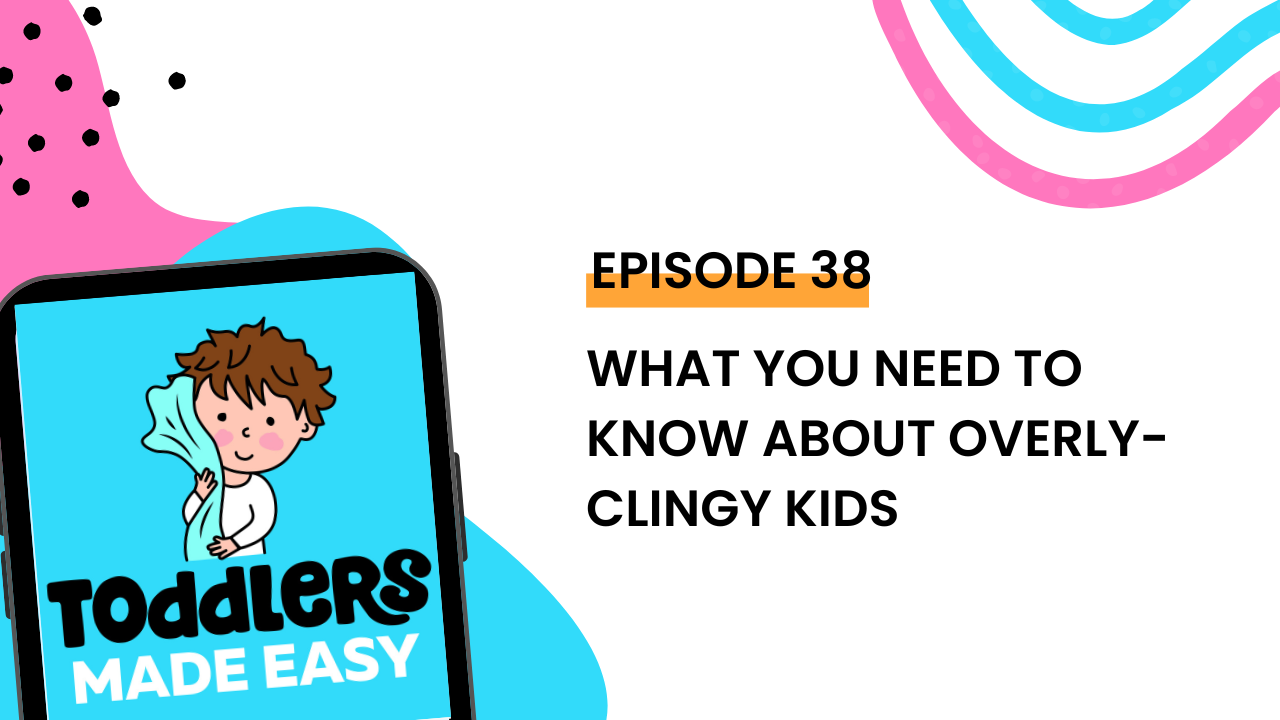What You Need To Know About Overly-Clingy Kids

As a parent, you might be familiar with the struggles of dealing with a clingy toddler. Whether it's wanting to sit on your lap all the time or pulling at your clothes when you need to use the washroom, having a little one attached to you can be emotionally draining. But instead of focusing solely on changing your child's behavior, it's important to understand why they behave the way they do and how you can support them during this critical developmental stage!
What You Need To Know About Overly-Clingy Kids
You’re Not Alone!
As a pediatrician and a mom, I understand the challenges of dealing with overly-clingy toddlers. In fact, in a recent Instagram poll, 70% of parents described their toddlers as super-clingy, so you're not alone in this struggle! But before we dive into solutions, it's important to shift our focus from fixing misbehavior to truly understanding our toddlers and fostering a deeper relationship with them.
A Developmental Prospective
From a developmental perspective, toddlers can and will experience conflicting feelings and thoughts. On the one hand, they're now mobile and can participate more fully in their world. But on the other hand, they're realizing they're individuals and capable of separating from you. This new independence mixed with a continued need for adult support can be confusing for children and lead to clinginess.
It's important to remember that your child's clinginess is not a sign of manipulation or control. Instead, they're seeking comfort and reassurance from you, just like you might seek comfort from a cozy blanket and a bowl of cereal after a long day. By understanding this, you can approach your child's clinginess with empathy and support, rather than frustration and annoyance.
Sophie’s Story
Sophie is a mom who runs a successful coaching business and needs to produce a steady stream of content for her clients and followers. She used to have a good routine going where she could get her work done while her daughter Chelsea played. But for no obvious reason, Chelsea suddenly became very clingy. She would follow Sophie around the house, holding onto her skirt and insisting on constant attention, making it increasingly difficult for Sophie to manage her work.
If you're in a similar situation, my advice is to establish clear boundaries with your child. For example, set up a designated play area where your child can play independently while you work nearby. Or, establish a daily routine with your child that includes special one-on-one time with you, so they feel reassured and less likely to cling to you throughout the day.
It's also important to recognize that your child's clinginess might be a sign that they need more attention or support from you. Take the time to sit down and engage with your child, whether it's playing with toys, reading a book, or simply talking about their day. By doing this, you're showing your child that you're there for them and that they don't need to cling to you for reassurance.
You Can Do This
Dealing with a clingy toddler can be challenging, but it's important to approach it with empathy and support. By understanding your child's developmental stage and emotional needs, you can establish clear boundaries, provide reassurance, and foster a deeper relationship with your little one. And remember, you’re not alone in this struggle! Many other parents experience the same things as their toddlers are growing and learning.
Resources:
Visit Toddles Made Easy
Toddlers Made Easy Online Course: Now, are you struggling with tantrums and picky eating and sibling rivalry yelling, or other tricky toddler moments? If so, check out our best-selling Toddlers Made Easy online course. And become the sturdy kind mom you wanna be.
FREE 5 Must-Dos Before Potty Training E-Book
Follow on IG




